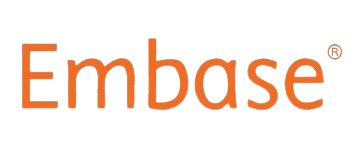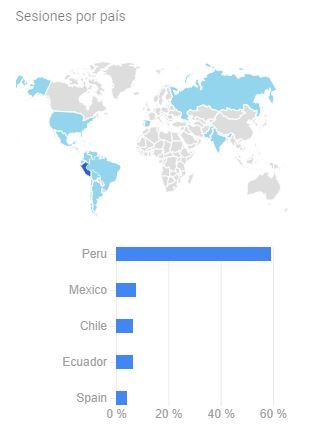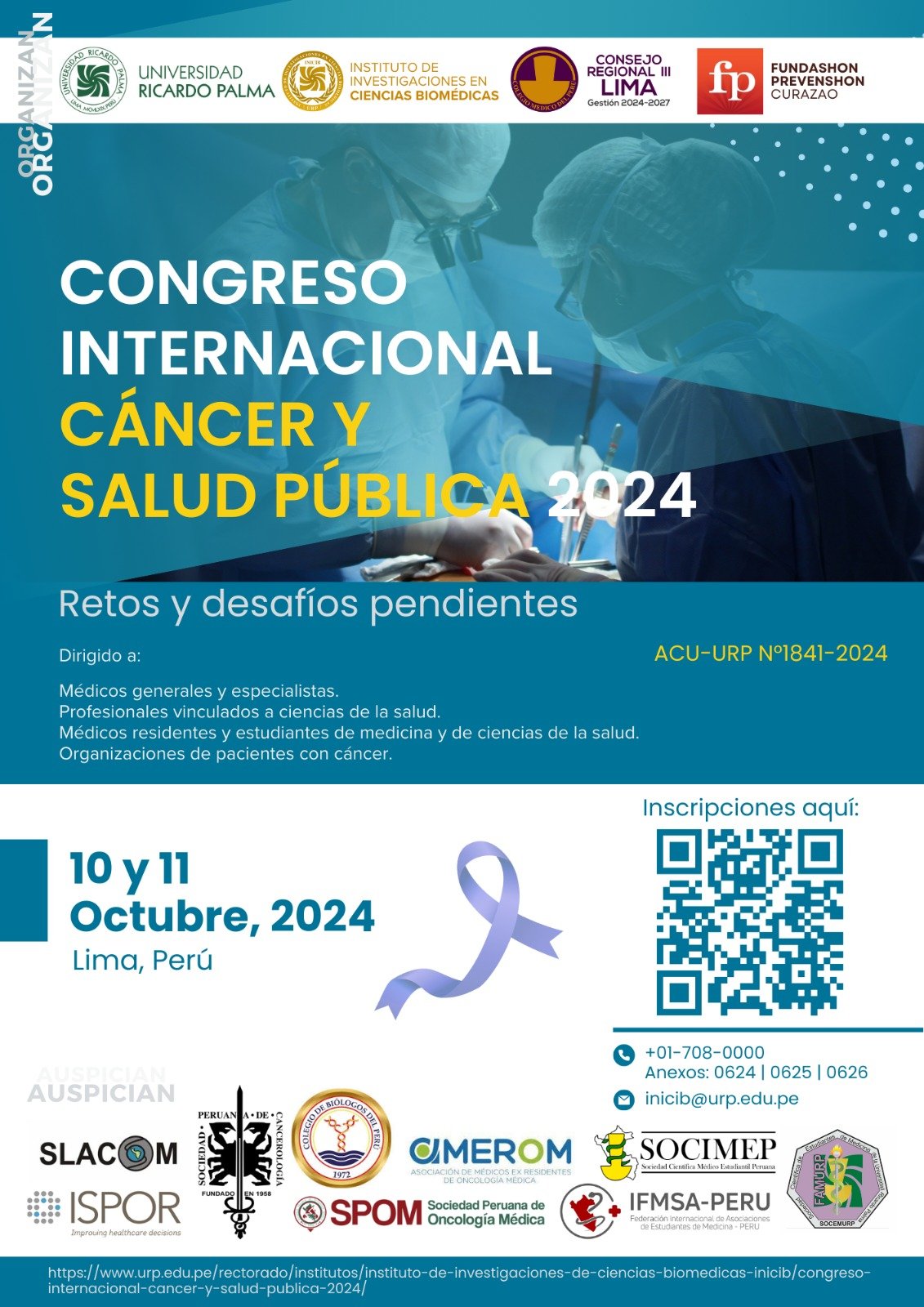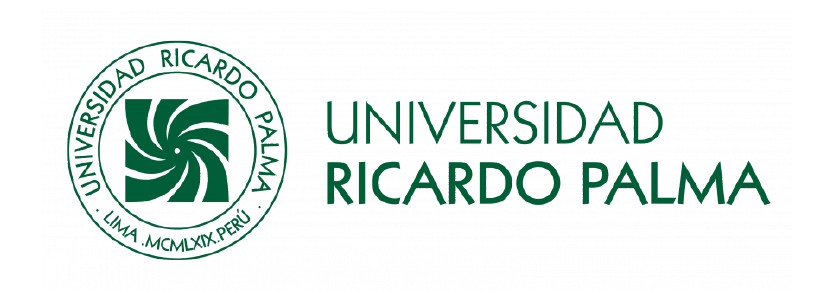Risky eating behaviors in young adults from two communes of the Ñuble region in Chile during covid-19 pandemic
Conductas alimentarias de riesgo en jóvenes adultos de dos comunas de la región de Ñuble en Chile durante pandemia covid-19
DOI:
https://doi.org/10.25176/RFMH.v23i2.5648Keywords:
Eating disorders, Bulimia nervosa, Anorexia nervosa, Binge eating disorder, QuarantineAbstract
Objective: To analyze risky eating behaviors in relation to nutritional status and physical activity in young adults during the COVID-19 pandemic in the communes of Chillán and Chillán Viejo. Methods: Observational and cross-sectional design. A sample of 184 young adults of both sexes, who lived in two communes in the Ñuble region (Chile) during the period of confinement due to COVID-19 pandemic, was obtained. A personal history questionnaire and the SCOFF scale that assesses the risk of eating behavior disorders (EDs) were applied. Results: A 37.16% risk for ED was found (95% CI: 30.23 – 44.63%). The risk of eating behavior disorders was related to the variables: physical activity (p=0.01 bivariate analysis) and nutritional status (p=0.03, adjusted analysis). Conclusion: It was possible to identify a higher proportion than that recorded in the literature and the factors associated with eating disorders were those that were expected to be found.
Downloads
References
Diagn C. American psychiatric association. Vol. 9, Archives of Neurology And Psychiatry. 1923. 636 p. doi: https://doi.org/10.1176/appi.ajp.160.4.6363
Bedford J, Enria D, Giesecke J, Heymann DL, Ihekweazu C, Kobinger G, et al. COVID-19: towards controlling of a pandemic. Lancet. doi: https://doi.org/10.1016/S0140-6736(20)30673-5"
MINSAL. Management of Chile in the Pandemic [Internet]. 2020. Disponible en: https://www.gob.cl/coronavirus/gestionpandemia/
Phillipou A, Meyer D, Neill E, Tan EJ, Toh WL, Van Rheenen TE, et al. Eating and exercise behaviors in eating disorders and the general population during the COVID-19 pandemic in Australia: Initial results from the COLLATE project. Int J Eat Disord. 2020;53(7):1158–65. doi: https://doi.org/10.1002%2Feat.23317
Landaeta-Díaz L, González-Medina G, Agüero SD. Anxiety, anhedonia and food consumption during the COVID-19 quarantine in Chile. Appetite. 2021;164(Sep):105259. doi: https://doi.org/10.1016/j.appet.2021.105259
Rodgers RF, Lombardo C, Cerolini S, Franko DL, Omori M, Fuller-Tyszkiewicz M, et al. The impact of the COVID-19 pandemic on eating disorder risk and symptoms. Int J Eat Disord. 2020;53(7):1166–70. doi: https://doi.org/10.1002/eat.23318
Clark Bryan D, Macdonald P, Ambwani S, Cardi V, Rowlands K, Willmott D, et al. Exploring the ways in which COVID-19 and lockdown has affected the lives of adult patients with anorexia nervosa and their carers. Eur Eat Disord Rev. 2020;28(6):826–35. doi: https://doi.org/10.1002/erv.2762
Zeiler M, Wittek T, Kahlenberg L, Gröbner EM, Nitsch M, Wagner G, et al. Impact of covid-19 confinement on adolescent patients with anorexia nervosa: A qualitative interview study involving adolescents and parents. Int J Environ Res Public Health. 2021;18(8):4251. doi: https://doi.org/10.3390/ijerph18084251
Gallo LA, Gallo TF, Young SL, Moritz KM, Akison LK. The impact of isolation measures due to covid-19 on energy intake and physical activity levels in australian university students. Nutrients. 2020;12(6):1–14. doi: https://doi.org/10.3390/nu12061865/
Boukrim M, Obtel M, Kasouati J, Achbani A, Razine R. COVID-19 and confinement: Effect on weight load, physical activity and eating behavior of higher education students in southern Morocco. Ann Glob Heal. 2021;87(1):1–11. doi: https://doi.org/10.5334/aogh.3144
Jáuregui-Lobera, Ignacio Igleasias Conde A, Sánches Rodriguez J, Et.al. Self-perception of weight and physical fitness, body image perception, control weight behaviors and eating behaviors in adolescents. Nutr Hosp. 2018;35(5):1115–23. doi: https://doi.org/10.20960/nh.1726
Godoy-Izquierdo D, González-Hernández J, Lara R, Rodríguez-Tadeo A, Ramírez MJ, Navarrón E, et al. Considering BMI, Body Image and Desired Weight Change for Suitable Obesity Management Options. Span J Psychol. 2020;23:1–14. doi: https://doi.org/10.1017/sjp.2020.36
Castejón Martínez MÁ, Berengüí Gil R, Garcés De Los Fayos Ruiz EJ. Relation of the body mass index, weight perception and variables related to eating disorder in university students. Nutr Clin y Diet Hosp. 2016;36(1):54–63. Disponible en: https://revista.nutricion.org/PDF/361castejon.pdf
Alfonso Urzúa M, Sandy Castro R, America Lillo O, Carolina Leal P. Prevalence of risk of eating disorders in school adolescents from northern Chile. Rev Chil Nutr. 2011;38(2):128–35. doi: https://doi.org/10.4067/S0717-75182011000200003
Jerez F T, Lagos H R, Valdés-Badilla P, Pacheco P E, Pérez C C. Prevalence of orthorexic behaviour in high school students of Temuco. Rev Chil Nutr. 2015;42(1):41–4. doi: https://doi.org/10.1016/0041-008X(75)90053-8
Hernández Sampieri R, Fernández Collado C, Baptista Lucio M del P. Investigation Methodology. Vol. 53, Journal of Chemical Information and Modeling. México D.F; 2013. 154–163, 170–191 p. Disponible en: https://www.uv.mx/personal/cbustamante/files/2011/06/Metodologia-de-la-Investigaci%C3%83%C2%B3n_Sampieri.pdf
Manzini JL. Helsinki declaration: Ethical principles for medical research on human subjects. In: Acta bioethica. Edimburgo; 2000. p. 321–34. doi: https://doi.org/10.1093/carcin/9.10.1727
Morgan JF, Reid F, Lacey JH. The SCOFF questionnaire: Assessment of a new screening tool for eating disorders. Br Med J. 1999;319(7223):1467–8. doi: https://doi.org/10.1136/bmj.319.7223.1467
Fajardo E, Méndez C, Jauregui A. Prevalence of eating disorders risk in a population of high school students, Bogota - Colombia. Rev Med. 2017;25(1):46–57. doi: https://doi.org/10.18359/rmed.2917
Rueda GE, Díaz LA, Campo A, Barros JA, Avila GC, Oróstegui LT, et al. Validation of the SCOFF survey for screening of eating disorders in female university students. Biomédica. 2005;25(2):196–202. Disponible en: http://pepsic.bvsalud.org/scielo.php?script=sci_arttext&pid=S1657-92672006000200008
Sanchez-Armass O, Raffaelli M, Andrade FCD, Wiley AR, Noyola ANM, Arguelles AC, et al. Validation of the SCOFF questionnaire for screening of eating disorders among Mexican university students. Eat Weight Disord. 2017;22(1):153–60. doi: https://doi.org/10.1007/s40519-016-0259-7
Teixeira AA, Roque MA, de Freitas AA, Dos Santos NF, Garcia FM, Khoury JM, et al. The Brazilian version of the SCOFF questionnaire to screen eating disorders in young adults: cultural adaptation and validation study in a university population. Brazilian J Psychiatry. 2021;43(6):613–6. doi: https://doi.org/10.1590%2F1516-4446-2020-1667
Martínez-González L, Villa TF, De La Torre AJM, Pérez CA, Cavanillas AB, Álvarez RC, et al. Prevalence of eating disorders in college students and associated factors: uniHcos project. Nutr Hosp. 2014;30(4):927–34. doi: https://doi.org/10.1055/a-1152-5064
Parrenõ-Madrigal IM, Diéz-Fernández A, Martínez-Vizcaíno V, Visier-Alfonso ME, Garrido-Miguel M, Sánchez-López M. Prevalence of Risk of Eating Disorders and its Association with Obesity and Fitness. Int J Sports Med. 2020;41(10):669–76. doi: https://doi.org/10.1055/a-1152-5064"
Bizri M, Geagea L, Kobeissy F, Talih F. Prevalence of eating disorders among medical students in a lebanese medical school: A cross-sectional study. Neuropsychiatr Dis Treat. 2020;16:1879–87. doi: https://doi.org/10.2147/ndt.s266241
Yao S, Zhang R, Thornton LM, Peat CM, Qi B, Du S, et al. Screen-detected disordered eating and related traits in a large population sample of females in mainland China: China Health and Nutrition Survey. Int J Eat Disord. 2021;54(1):24–35. doi: https://doi.org/10.1002%2Feat.23409
Zapata F D, Granfeldt M. G, Muñoz R. S, Celis B. M, P. BV, Sáez C. K, et al. Risk of eating disorder in Chilean adolescents from different types of educational establishments. Arch latinoam nutr. 2018;68(3):217–23. Disponible en: https://www.researchgate.net/publication/332548946_Risk_of_eating_disorders_in_Chilean_adolescents_of_different_types_educational_establishments
Hernández N, Alves D, Arroyo M, Basabe N. From fear of obesity to the obsesion with thinness; attitudes and diet. Nutr Hosp. 2012;27(4):1148–55. doi: https://doi.org/10.3305/nh.2012.27.4.5829
Coulthard H, Sharps M, Cunliffe L, van del Tol A. Eating in the lockdown during the Covid 19 pandemic; self-reported changes in eating behaviour, and associations with BMI, eating style, coping and health anxiety. Appetite. 2021;161:105082. doi: https://doi.org/10.1016/j.appet.2020.105082
Nurkkala M, Keränen AM, Koivumaa-Honkanen H, Ikäheimo TM, Ahola R, Pyky R, et al. Disordered eating behavior, health and motives to exercise in young men: Cross-sectional population-based MOPO study. BMC Public Health. 2016;16(1):1–8. doi: https://doi.org/10.1186/s12889-016-3162-2
Martínez-Rodríguez TY, Bernal-Gómez SJ, Mora A, Hun N, Reyes-Castillo Z, Valdés-Miramontes EH, et al. Physical activity as self-regulating behavior of perceived anxiety and dysfunctional patterns of dietary intake during isolation due to covid-19 among latin americans. Rev Chil Nutr. 2021;48(3):347–54. doi: https://doi.org/10.21500/20112084.4721
Czepczor-bernat K, Modrzejewska J, Modrzejewska A, Matusik P. Do COVID-19-Related Stress , Being Overweight , and Body Dissatisfaction Contribute to More Disordered Eating in Polish Women ?— A Cluster Analysis Approach. Environ Res Public Heal. 2021;18(24):13100. doi: https://doi.org/10.3390/ijerph182413100
Martínez-Ávila WD, Sánchez-Delgado G, Acosta FM, Ruiz JR. Eating Behavior , Physical Activity and Exercise Training: A Randomized Controlled Trial in Young Healthy Adults. Nutrients. 2020;12(12):3685. doi: https://doi.org/10.3390/nu12123685
De Las Cuevas C, Gonzalez de Riviera J. Self-reports and biased responses. An Psiquiatr. 1992;8(1985):362–6. Disponible en: http://psicoter.es/_arts/92_A109_09.pdf

Downloads
Published
How to Cite
Issue
Section
License
Copyright (c) 2023 Revista de la Facultad de Medicina Humana

This work is licensed under a Creative Commons Attribution 4.0 International License.



































